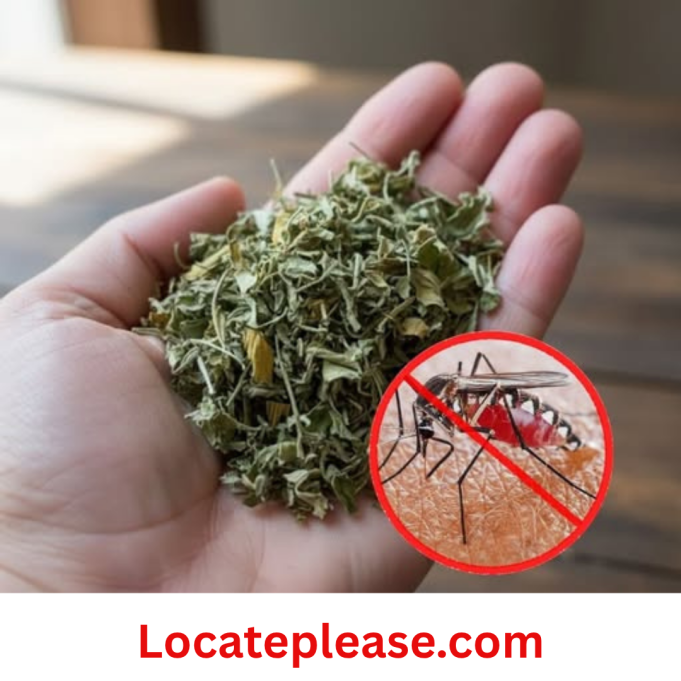Tired of swatting mosquitoes at night? Fed up with chemical sprays, buzzing devices, and sleepless evenings? Nature has a quiet, powerful answer: mugwort leaves.
This humble herb, often seen growing wild along roadsides and fields, is more than just a traditional medicinal plant—it’s a natural mosquito repellent that’s been used for centuries across Asia, Europe, and North America. Crush a handful of fresh mugwort leaves, place them near your bed or windowsill, and you might just find yourself sleeping through the night without a single bite.
Why Mugwort Works: The Science Behind the Scent
Mugwort (Artemisia vulgaris) belongs to the same botanical family as wormwood and tarragon. It produces a strong, earthy aroma from essential oils like thujone, camphor, and borneol—compounds that are pleasant to humans but utterly repulsive to mosquitoes.
When you crush the leaves, you release these volatile oils into the air. The scent interferes with a mosquito’s ability to detect carbon dioxide and body heat—its primary methods for finding prey. In short, mugwort essentially “hides” you from hungry insects.
Studies have shown that extracts from Artemisia species can significantly reduce mosquito landings and biting activity—making mugwort one of the most effective natural insect deterrents available.
How to Use Mugwort Leaves to Repel Mosquitoes
Using mugwort is simple, safe, and chemical-free. Here are several easy ways to harness its power:
1. Fresh Leaves on Your Nightstand
- Pick 4–5 fresh mugwort leaves (wear gloves if sensitive to plants).
- Gently crush them between your palms to release the aromatic oils.
- Place them in a small bowl or on a saucer near your bed, window, or doorway.
- Replace every 2–3 days for continued effectiveness.
✅ Tip: Pair with a fan—the airflow helps disperse the scent further.
2. Dried Bunches as Natural Air Fresheners
- Harvest mugwort in late summer when oils are strongest.
- Bundle stems together and hang them upside down in a dry, dark place to dry.
- Once dried, place bundles in corners of bedrooms or near entry points.
- As air moves, it brushes against the leaves, releasing their protective aroma.
✅ Bonus: Dried mugwort also deters moths and other small pests.
3. Mugwort Sachets for Drawers & Pillows
- Dry and crumble the leaves, then mix with lavender or mint for added freshness.
- Place in small cloth sachets.
- Tuck under pillows, in drawers, or near open windows.
✅ Great for camping trips or outdoor cabins.
4. Homemade Mugwort Spray
- Boil 1 cup of water with ½ cup crushed mugwort leaves for 10 minutes.
- Let steep for another 30 minutes, then strain.
- Pour into a spray bottle (add a few drops of witch hazel to preserve).
- Lightly mist around room edges, curtains, or screens—avoid spraying directly on skin unless diluted properly.
Beyond Bug Repellent: The Healing Power of Mugwort
Mugwort isn’t just a pest deterrent—it’s a revered herb in traditional medicine:
- Used in Traditional Chinese Medicine (TCM) to support digestion and circulation.
- Famous for its role in moxibustion, where dried mugwort is burned near acupuncture points to stimulate healing.
- Believed to promote vivid dreams and mental clarity when placed under the pillow.
- Contains antioxidants and anti-inflammatory compounds beneficial for overall wellness.
However, pregnant women should avoid direct use of mugwort, as it may stimulate uterine contractions.
Where to Find Mugwort
Mugwort grows wild in many temperate regions:
- Look along fences, riverbanks, and uncultivated areas.
- It has silvery-green leaves with a velvety underside and clusters of small yellow or reddish flowers.
- You can also grow it in gardens—but be cautious, as it can spread aggressively.
🌿 Never harvest from polluted areas (near roads or industrial zones).
Other Natural Mosquito-Repelling Plants
While mugwort is particularly potent, it’s not alone. Combine it with other aromatic herbs for maximum protection:
- Lavender: Calming to humans, deterring to bugs.
- Citronella: Known for its lemony mosquito-repelling punch.
- Basil: Especially effective against Aedes aegypti, the dengue-carrying mosquito.
- Peppermint: Its menthol scent confuses and repels insects.
Plant these around your home or keep potted versions near doors and windows.
Final Thought: Sleep Peacefully, Naturally
You don’t need synthetic chemicals or loud gadgets to reclaim your nights. Sometimes, the best solutions grow quietly in the wild.
Crush a handful of mugwort leaves. Let their ancient scent fill your room. And as the mosquitoes retreat, breathe easy—knowing you’ve tapped into nature’s wisdom to protect what matters most: your peace, your health, and a good night’s sleep.
So next time you see that unassuming green plant by the path, don’t walk past it.
Stop. Pick a leaf. Crush it.
And let the bugs know: this space is taken.










